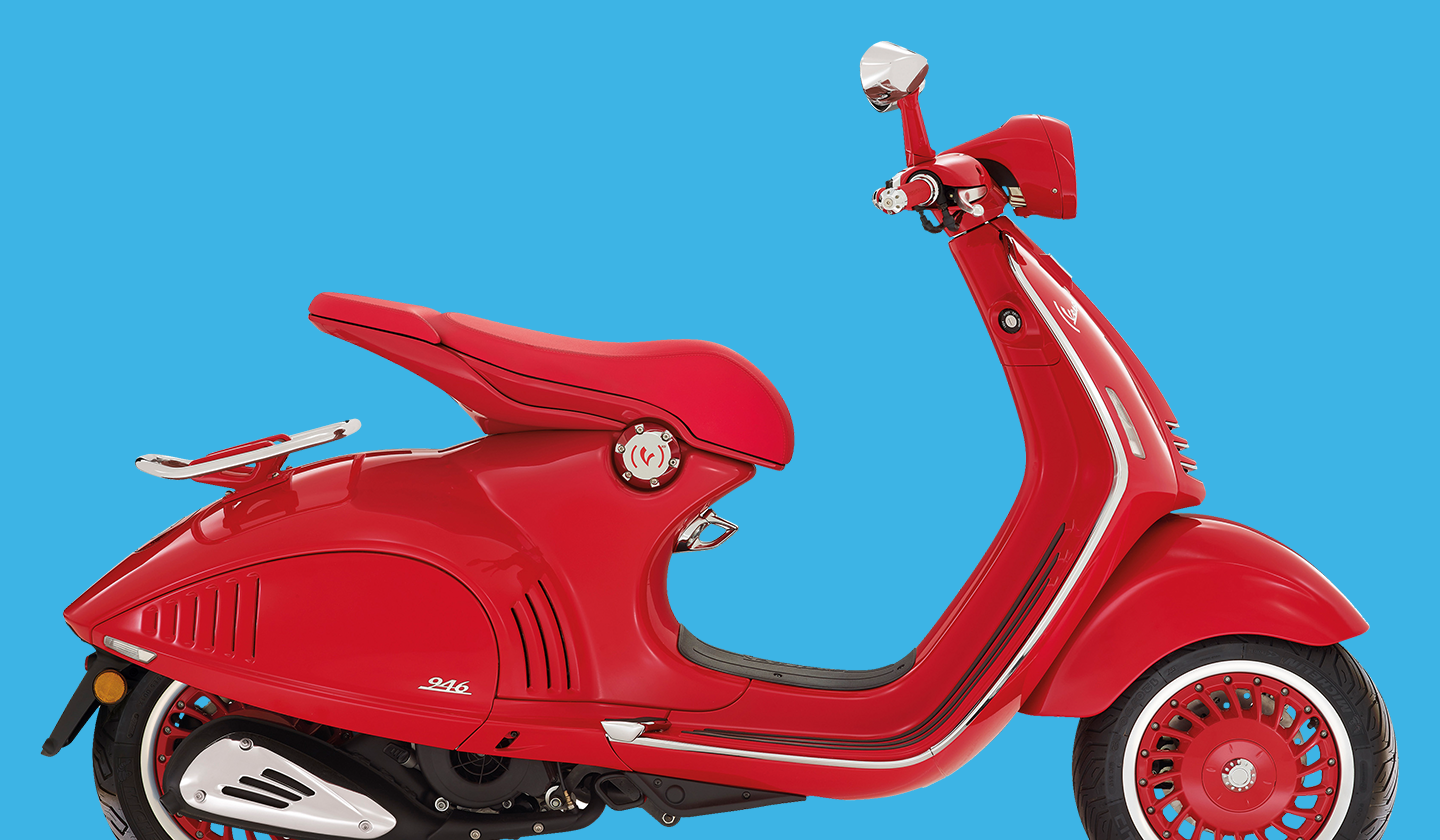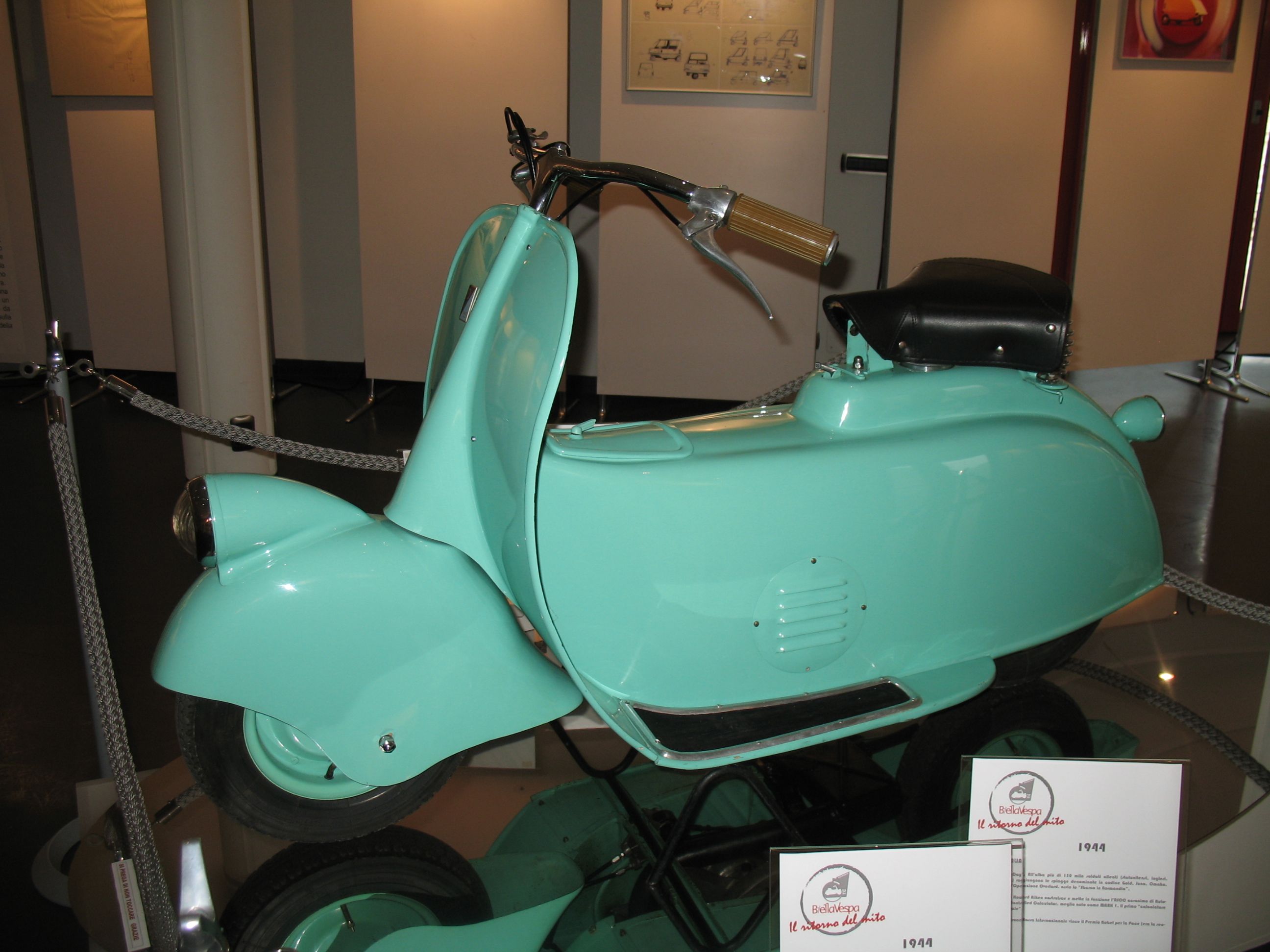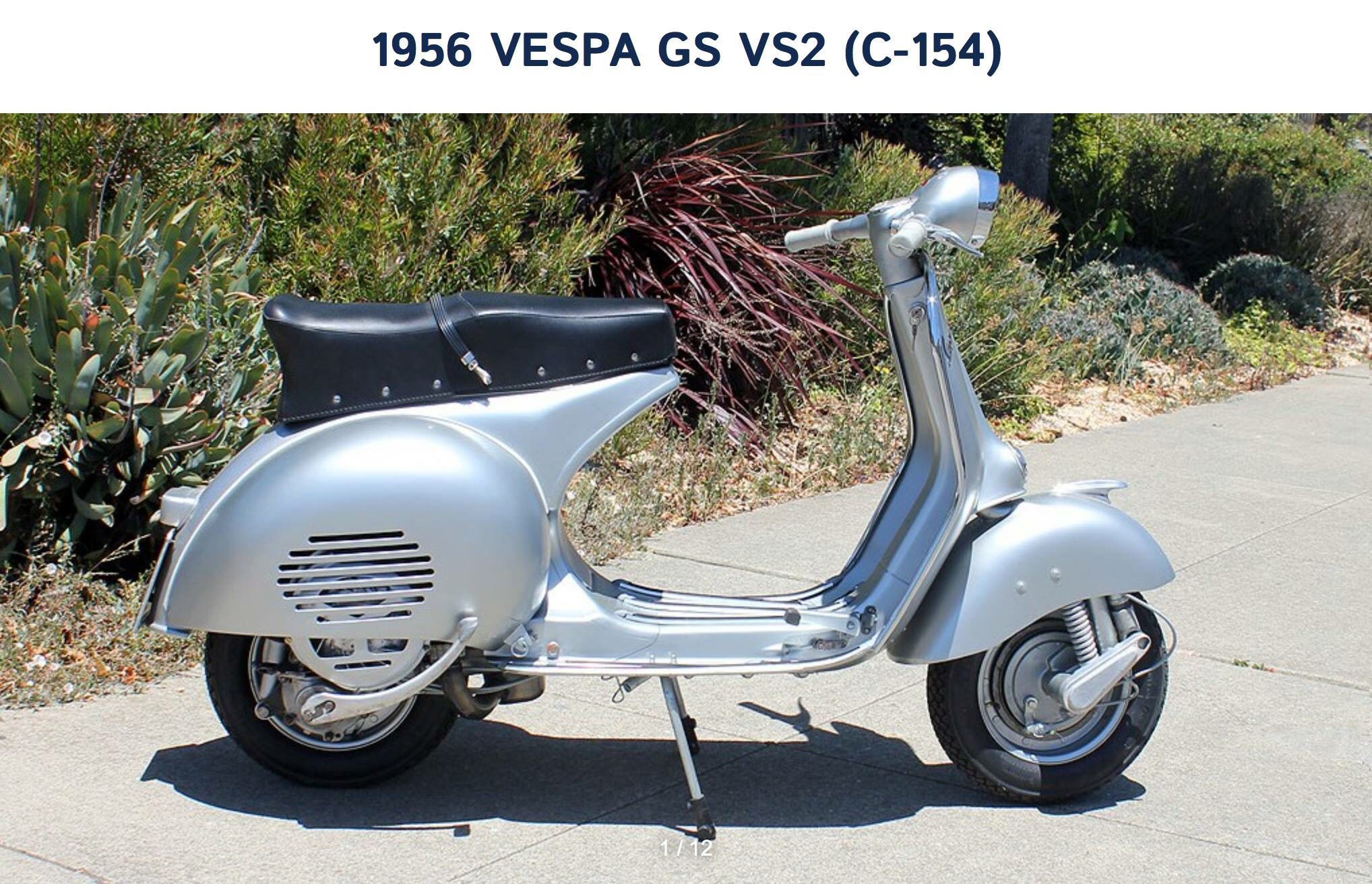The Vespa was born out of a need to get a nation mobile after the Second World War. No-one could foresee how successful and iconic it would become over the years, helped by a starring role in a movie early in its life. Mods adopted it as their transport of choice in the 1960s but it has remained, at its core, transport for the masses. In spring 2022, Vespa turns 75 and it going as strong as ever.
Is there anything more Italian than the Vespa? It can be mentioned in the same sentence as pasta and pizza, the Colosseum and the Leaning Tower of Pisa as a definition of Italian lifestyle. Imitated a thousand times but never bettered, it got the Italian population mobile after the second world war as much as the FIAT 500 did and remains in production in virtually the same form 75 years later.
3Getting a nation mobile33}
After the second world war, Italy was forced to drastically reduce its aircraft production capacity and capability. Piaggio, a large industrial concern since the turn of the century, had, before the war, produced trains, nautical fittings, aircraft engines, aeroplanes, trucks, trams, buses and aluminium windows and doors. With the Piaggio factory completely bombed out, the company needed to start building something that would enable it to keep its workforce employed.
Italy's crippled economy, and the disastrous state of its roads, were not immediately conducive to the re-development of the automobile market. Enrico Piaggio, son of Piaggio's founder Rinaldo Piaggio, forced to leave the aeronautical field, chose to address Italy's urgent need for a modern and affordable mode of transportation for the masses.
In 1944, Piaggio engineers Renzo Spolti and Vittorio Casini designed a motorcycle with bodywork fully enclosing the drivetrain and forming a tall splash guard at the front. In addition to the bodywork, the design included handlebar-mounted controls, forced air cooling, wheels of small diameter, and a tall central section that had to be straddled. Officially known as the MP5 ("Moto Piaggio no. 5"), the prototype was nicknamed "Paperino" (either "duckling" or “Donald Duck" in Italian). Piaggio really didn’t like the MP5, especially the tall central section.
3Why not bring in a designer who hates motorcycles? 33}
He contracted aeronautical engineer Corradino D’Ascanio - who actually hated motorbikes, thinking them dirty and unreliable - to redesign the scooter. D’Ascanio had previously been employed by Agusta where he designed and oversaw construction of the first modern helicopter. He was then hired by Ferdinando Innocenti, whose factory has also been bombed out during the war and who also recognised the need for cheap transport for exactly the same reasons as Piaggio, to design a scooter. The two fell out over the details and D’Ascanio took his designs to Piaggio. (Innocenti would commence production of the Lambretta in 1947).
3"It's a Wasp!"33}
D'Ascanio's MP6 prototype had its engine mounted beside the rear wheel. The wheel was driven directly from the transmission, eliminating the drive chain and the oil and dirt associated with it. The prototype had a unit spar frame with stress-bearing steel outer panels. These changes allowed the MP6 to have a step-through design without a centre section like that of the Paperino. The MP6 design also included a single sided front suspension, interchangeable front and rear wheels mounted on stub axles, and a spare wheel. Other features of the MP6 were similar to those on the Paperino, including the handlebar-mounted controls and the enclosed bodywork with the tall front splash guard.
Upon seeing the MP6 for the first time, Enrico Piaggio exclaimed: "Sembra una vespa!" ("It looks like a wasp!") Piaggio effectively named his new scooter on the spot. Vespa is both Latin and Italian for wasp—derived from the vehicle's body shape: the thicker rear part connected to the front part by a narrow waist.
The scooter had rigid rear suspension and small 200mm wheels that allowed a compact design and plenty of room for the rider's legs. The Vespa's enclosed, horizontally mounted 98 cc two-stroke engine acted directly on the rear drive wheel through a three-speed transmission, controlled by the left twistgrip.
The first examples appeared in 1946 and were unlike anything seen before. The press was initially sceptical but, after riding them at the launch, reviews were favourable. Still, sales were slow to take off until payment by instalment was introduced, which was the catalyst. Another important milestone came when Gregory Peck and Audrey Hepburn rode a Vespa through the streets of Rome in the movie Roman Holiday from 1952; that exposure alone accounted for 100,000 sales.
3Hitting the Million mark33}
By 1956, one million had been sold, then two million by 1960. By the 1960s, the Vespa—originally conceived as a utility vehicle—had come to symbolise freedom and imagination, and resulted in further sales boosts: four million by 1970, and ten million by the late 1980s.
Italy was the Vespa’s biggest market, although the UK topped the sales charts at one point in the 1960s. That was the time, of course, of the whole mods and rockers scene, the stylish mods loving the fact that the Vespa was so clean to operate and having a form of weather protection. The ultimate model was the 150cc GS.
It’s not overstating things to say that, with the Vespa, Piaggio created the scooter industry. It also mobilised a country after the ravages of a war, not to mention rescued Piaggio from the brink of financial disaster.
Happy Birthday, Vespa.



